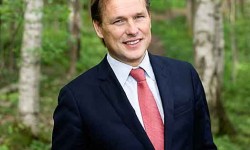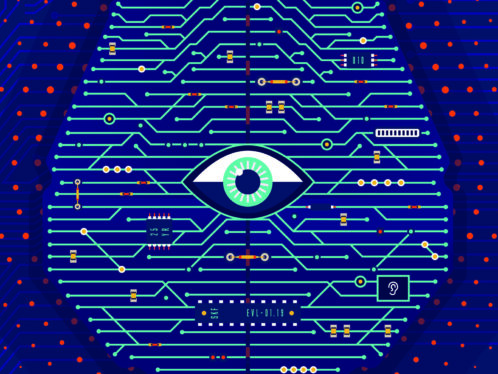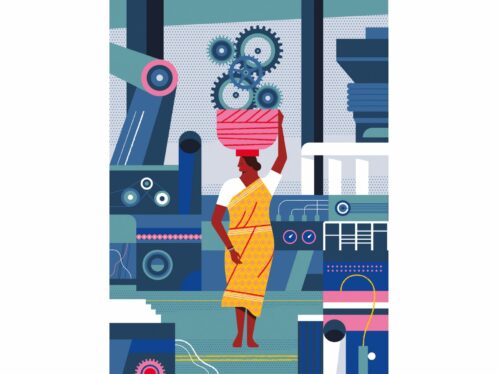The age of uncertainty
Accounting giant KPMG has published a report on how businesses should navigate an increasingly complex – and decreasingly predictable – future.
Sure, we all worry about the future of the earth. We understand that climate change, population growth and resource scarcity are becoming more severe with each passing year. But how seriously do businesses take these global “megatrends”? Accounting group KPMG argues that every corporation should take these megatrends very seriously, and start planning now for the considerable risks and hidden opportunities. In a recent publication, Expect the Unexpected: Building business value in a changing world, KPMG compiled and analyzed more than two dozen forecasts from international agencies, global think tanks, national agencies and noted futurists to identify the global forces most likely to have the greatest impact on businesses. Barend van Bergen, based in the Netherlands, leads KPMG’s Global Centre of Excellence for Climate Change & Sustainability. The report was commissioned, he says, because “this topic is so important and transformative for our clients, we wanted to stay at the forefront of discussions about it.” His group’s report states that the resulting list of 10 megatrends “will impact each and every business over the next 20 years.” Some alarming statistics back that claim: Trucost, an independent environmental research agency, analyzed a data set based on the operations of more than 800 companies representing 11 sectors, between 2002 and 2010. Drawing upon current environmental-economic research, 22 “environmental impacts” – including greenhouse gases, water abstraction and waste generation – were converted into financial value and aggregated. These costs jumped from 566 billion to 846 billion US dollars (a 50 percent increase) during those eight years. And these costs are often hidden; for the most part, such “external environmental costs” do not appear on corporate financial statements. Van Bergen says, “Businesses need to know what these megatrends are and how these trends will affect their business model, production, operations, clients, etc. In fact, it’s the fiduciary responsibility of businesses to their shareholders. It’s prudent for business leaders to understand the risk and opportunity sides of these trends.” According to Expect the Unexpected, people have caused more extensive and rapid changes to ecosystems in the past 20 years than at any other time in human history. Take climate change, for example. WWF and the Global Footprint Network assert that humans used resources and produced CO2 during the past 20-year period at a rate 50 percent faster than the earth can sustain. Climate change exposes businesses to many kinds of risk – physical, regulatory, “reputational”, competitive, social and litigious. But the report cautions that projections of individual trends won’t be sufficient for strategic business decisions or government policies. Avoiding unintended consequences requires a full understanding of the interconnected system of the megaforces identified by KPMG. Growing corn or palms for biofuel to reduce greenhouse gases, for example, can also contribute to higher food prices resulting from the competition for arable land, accelerated deforestation, depleted water resources in some areas and lower biodiversity. Similarly, a company may understand its direct dependency on water, but it may not have considered how increasing water scarcity could impact the supply of its material resources. KPMG recommends a systems-thinking approach, using causal loop diagramming, in developing quantitative prediction models. Of course, the further one looks into the future, the lower the usefulness of formal mathematical modelling. Futurists therefore turn to scenario methods based on qualitative storytelling. “We’ve tried to distil a number of different possible scenarios into four different archetypes of scenarios,” says van Bergen (see fact box). He encourages businesses to consider how their current strategies would fare in each of these possible futures. KPMG’s report states, “The central challenge of our age – decoupling human progress from resource use and environmental decline – will also be one of the biggest sources of future success for business.” Indeed, sustainability is increasingly being seen as a source of innovation and growth rather than simply cost reduction and risk management. Being mindful of the future can pay off – literally. The Carbon Disclosure Project found that companies with a strategic focus on climate change approximately doubled the average total return to investors of the world’s largest companies (the “Global 500” in the FTSE Global Equity Index Series) from January 2005 to May 2011. The trend toward resource scarcity, for example, creates opportunities for companies that can improve crop yields, reduce land degradation or sustain fish stocks. Growing cities require infrastructure improvements including construction, water and sanitation, electricity, waste, transport, health, public safety and Internet and cell phone connectivity. The integrated nature of modern cities will require companies to collaborate with each other, their suppliers, their customers, local and national governments and maybe even their competitors to provide optimum solutions. Unfortunately, attempts to establish worldwide policies haven’t kept up with the growth of worldwide challenges. KPMG’s report bemoans the lack of clear global rules, powerful regulatory incentives and a level playing field for the business community to support it in moving to sustainable growth. “Business is a proactive part of the equation, but it can only do so much on its own,” says van Bergen. “Government has to do its part and work together in public-private partnerships.” Van Bergen is ambivalent about the future. “It depends on your view of the world and humanity,” he says. “From an economic or technical perspective, there is no lack of capital, and we don’t lack the technology necessary for solutions. It would only take 2–3 percent of global GDP to solve all our environmental and social problems. But that’s very hard, due to vested interests and a lack of political will. Governments are worried about the financial crisis, so there are many barriers. But on a macroeconomic level this can be solved, with lots of innovation and new thinking.” KPMG’s report is available for free download at kpmg.com





